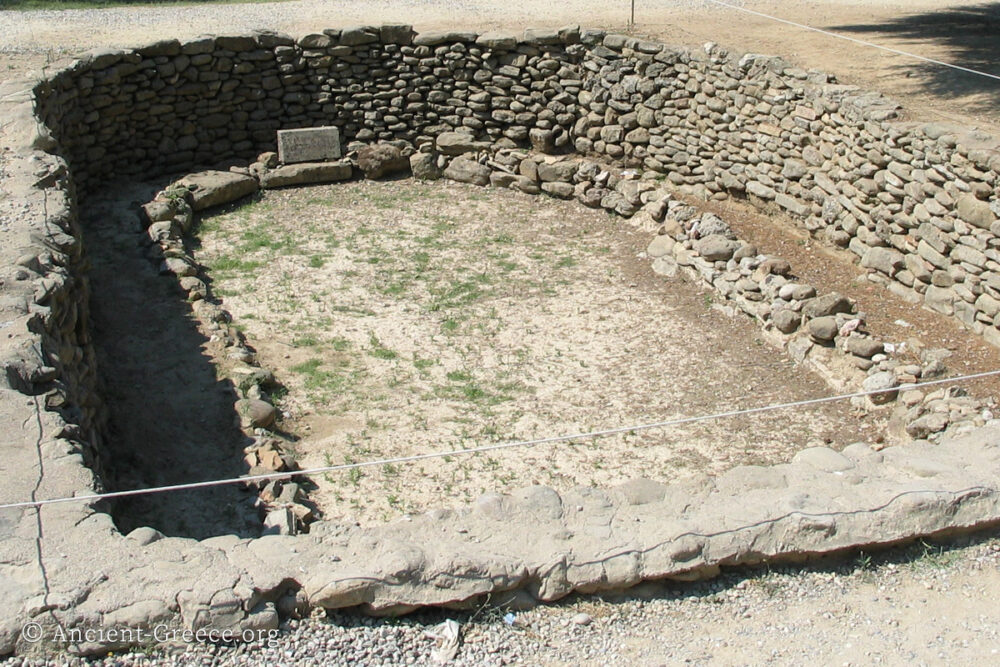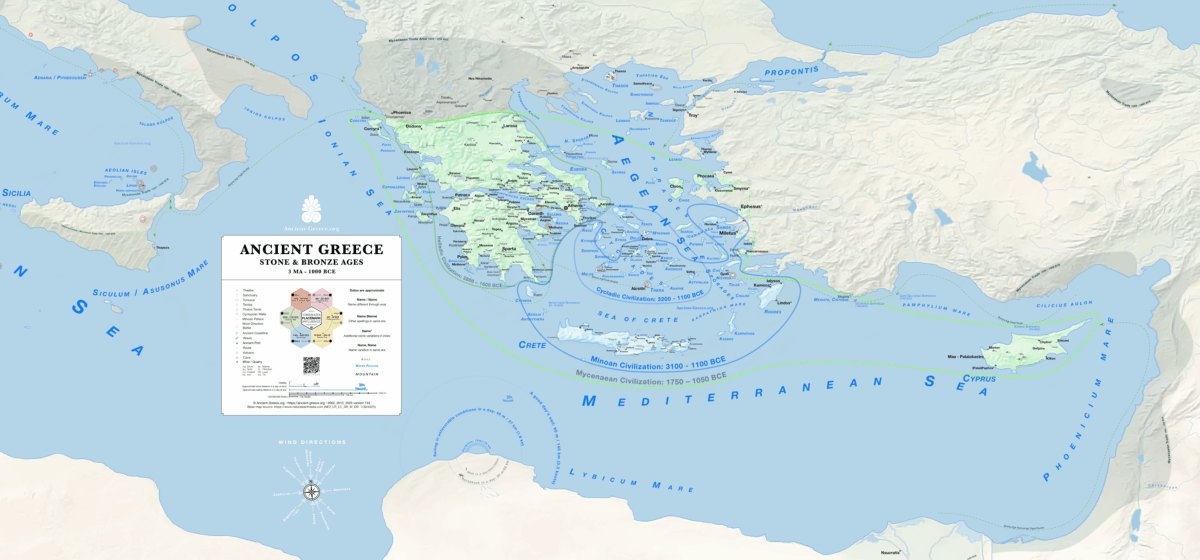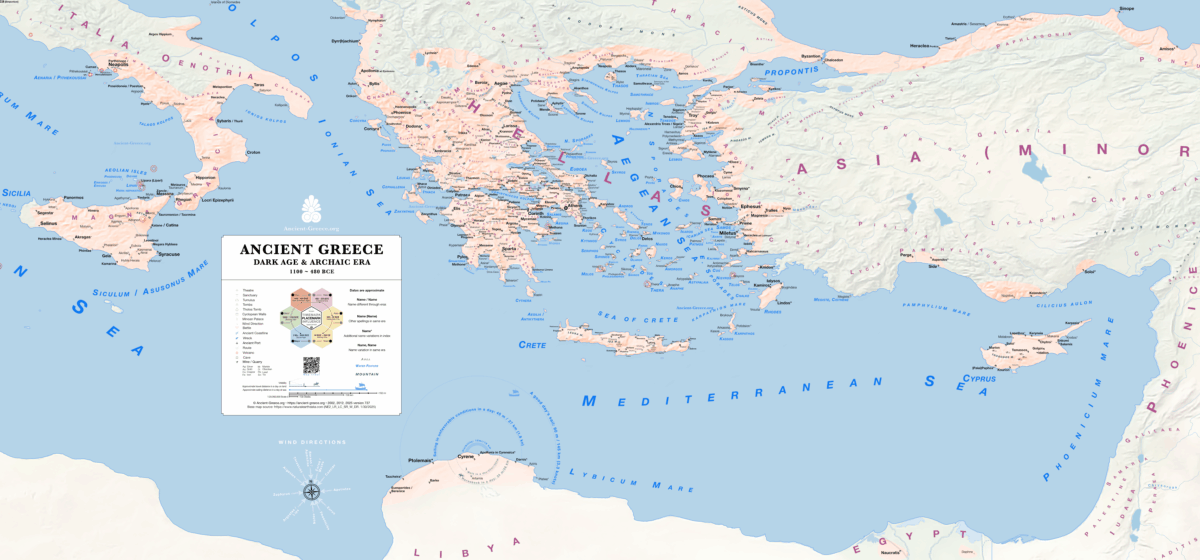
On this page:
Historical Periods
Ancient Greek history is generally divided into the following eras:
Paleolithic (circa 400,000 – 13,000 BP)
Mesolithic (circa 10,000 – 7000 BCE)
Neolithic (circa 7000 – 3000 BCE)
Bronze Age (circa 3300 – 1150 BCE)
Cycladic (circa 3200 – 1100 BCE) in the Aegean islands
Minoan (circa 2600 – 1200 BCE) in Crete
Helladic (circa 2800 – 1600 BCE) on the mainland.
Mycenaean or Late Helladic (circa 1600 – 1100 BCE)
Dark Ages (circa 1100 – 700 BCE)
Archaic (circa 700 – 480 BCE)
Classical (480 – 323 BCE)
Hellenistic (323 – 30 BCE)
Each era had its own unique cultural characteristics, and the transition between them was often tumultuous.
Maps by Period
Chapters
This history of Ancient Greece is divided into the following chapters:
- Timeline
- Introduction
- Overview
- Geography
- Stone Age
- Bronze Age
- Dark Ages
- Archaic Era
- Classical Era
- Hellenistic Era
Inscriptions by era (Clockwise): Bronze Age Linear A script from 1450 BCE; Early Greek Alphabet from 7th c. BCE; Classical era Ostracon from 5th century BCE; “The Rosetta Stone” from 196 BCE.
Related Pages









